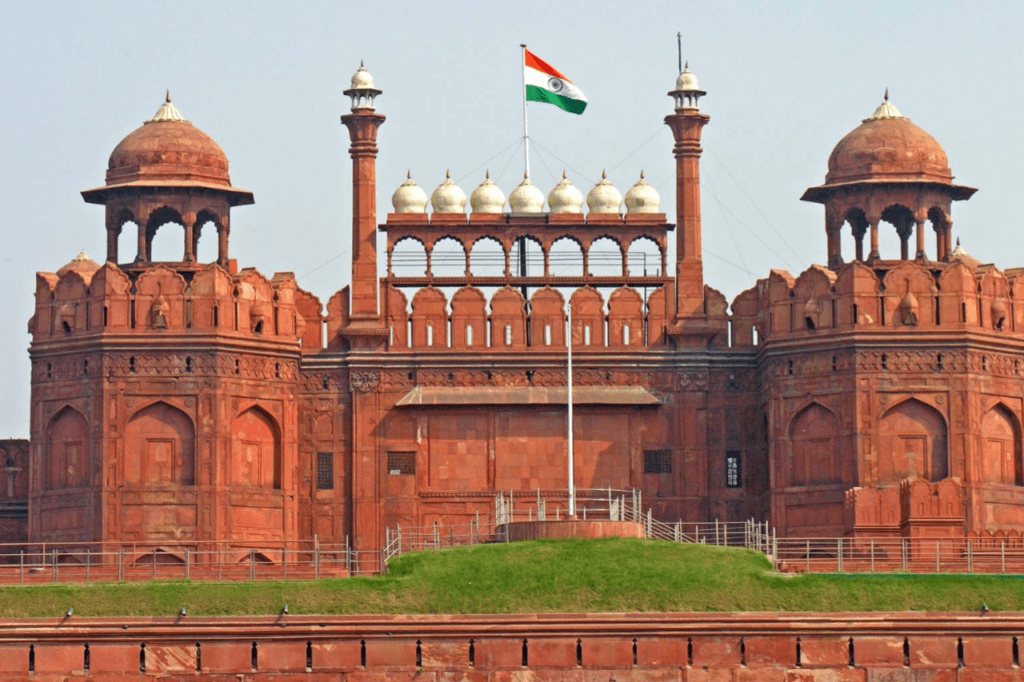Step-by-step guide on obtaining Indian citizenship easily. Learn the straightforward process and requirements to become a citizen of India. From eligibility criteria to necessary documents, our comprehensive guide simplifies the entire application process. Follow these clear instructions to navigate the path to Indian citizenship seamlessly.
Benefits of Indian Citizenship
- Employment Opportunities: Indian citizens have access to a wide array of job opportunities across various sectors. Enjoy the freedom to work and contribute to the country’s vibrant economy.
- Education Access: As an Indian citizen, you can pursue education in prestigious institutions with numerous scholarships and reservations available exclusively for citizens.
- Healthcare Benefits: Access to quality healthcare is a crucial perk. Indian citizens can avail themselves of government-sponsored health programs and services.
- Democratic Rights: Cherish the right to vote and actively participate in shaping the nation’s future through democratic processes.
- Property Ownership: Owning property becomes more straightforward for Indian citizens, making it easier to invest in real estate and secure your future.
- Social Welfare Schemes: Indian citizens are eligible for various government welfare schemes, ensuring a safety net during times of need.
- Cultural Heritage: Embrace the rich cultural heritage of India as a citizen, participating in festivals, traditions, and community events.
- Visa-Free Travel: Indian citizenship opens doors to hassle-free travel to numerous countries without the need for extensive visa procedures.
- Business Opportunities: Entrepreneurs benefit from a conducive environment, with support and opportunities for business growth.
- Retirement Benefits: Enjoy retirement benefits and social security measures provided by the government for a comfortable post-retirement life.
Requirements for Indian Citizenship
1. Residential Criteria:
To qualify, you must have resided in India for a specified period. Continuous residency is a key factor.
- Stay Duration: To qualify, you must have lived in India for a certain period. The duration varies based on the type of citizenship application.
- Continuous Presence: The authorities usually look for continuous residency during the specified period. Gaps or extended stays outside the country might affect your eligibility.
- Legal Residency: Your stay should be legal, adhering to the visa or permit regulations. Illegal residence can lead to complications in the citizenship process.
- Documentary Proof: Keeping proper documentation of your stay is essential. This includes rental agreements, utility bills, and other relevant paperwork.

2. Documentation:
Ensure you have the necessary documents, such as a valid visa and proof of residence, to support your citizenship application.
- Proof of Identity (POI):
- Submit a valid government-issued photo ID, such as a passport or Aadhar card.
- Ensure that the document includes your full name, date of birth, and a clear photograph.
- Proof of Address (POA):
- Furnish a document verifying your current address, like a utility bill or rental agreement.
- Ensure the document is recent and shows your name and address.
- Proof of Birth:
- Provide a birth certificate issued by the competent authority.
- If unavailable, an affidavit affirming your date and place of birth can be submitted.
- Proof of Renunciation (if applicable):
- If you held citizenship of another country, submit proof of renunciation.
- This could be a Renunciation Certificate from the relevant authorities.
- Proof of Residence in India:
- Offer evidence of your stay in India for the specified duration, such as visa stamps or registration certificates.
- Character Certificate:
- Obtain a character certificate from a responsible person or authority to attest to your good conduct.
- Language Proficiency Certificate:
- If necessary, provide a certificate demonstrating proficiency in the prescribed language.
- OCI/PIO Card (if applicable):
- If you hold an Overseas Citizen of India (OCI) or Person of Indian Origin (PIO) card, submit a copy.
3. Good Character:
Maintain good conduct and moral character during your stay in India. Any criminal record may affect your eligibility.
4. Language Proficiency:
Basic proficiency in a language recognized by the Constitution of India is often required. This is to ensure effective communication and integration.

- 1. Know the Language Requirements: Familiarize yourself with the specific language(s) required for Indian citizenship. Typically, English and Hindi are widely accepted, but regional languages may also be considered.
- 2. Language Proficiency Tests: Prepare for language proficiency tests recognized by Indian authorities. Common exams include the International English Language Testing System (IELTS) for English and the Hindi Prachar Sabha exams for Hindi.
- 3. Language Courses and Certifications: Enroll in language courses or programs to enhance your skills. Obtaining certifications from reputable language institutes can strengthen your application.
- 4. Practice Regularly: Consistent practice is key. Engage in daily conversations, read newspapers, and watch movies or shows in the required language to improve your proficiency.
- 5. Attend Language Workshops: Participate in workshops or language exchange programs to immerse yourself in the linguistic environment. Practical exposure can significantly boost your language skills.
- 6. Seek Professional Guidance: Consider seeking guidance from language experts or immigration consultants who can provide personalized advice and support tailored to your needs.
- 7. Stay Informed about Updates: Keep yourself updated on any changes or updates to language proficiency requirements. Government regulations may evolve, so staying informed is crucial.
5. Renunciation of Other Citizenship:
In some cases, you may need to renounce your citizenship in another country before acquiring Indian citizenship.
6. Application Process:
Follow the proper channels for applying, including submitting the required forms and attending any interviews or examinations.
7. Special Cases:
Certain categories, such as spouses of Indian citizens, may have specific criteria. Check for any special provisions that may apply to your situation.
8. Legal Compliance:
Adhere to all laws and regulations of the country during your residency. Any violation may impact your citizenship application.
How to Apply for Indian Citizenship
Are you considering becoming an Indian citizen? This comprehensive guide will walk you through the straightforward process of applying for Indian citizenship. Follow these simple steps to embark on your journey to becoming a proud citizen of India.

Step 1: Determine Eligibility: Before initiating the application process, ensure that you meet the eligibility criteria for Indian citizenship. Common eligibility factors include residency duration, marriage to an Indian citizen, or Indian ancestry. Verify your qualifications to avoid any complications in the later stages.
Step 2: Gather Required Documents: Prepare a set of essential documents, such as proof of residence, identity, and any relevant certificates. These documents may include your passport, visa details, birth certificate, and marriage certificate (if applicable). Ensure that all documents are valid and up-to-date.
Step 3: Renunciation of Previous Citizenship: If you currently hold citizenship in another country, you may be required to renounce it as India does not allow dual citizenship. Provide evidence of renunciation along with your application to avoid any delays.
Step 4: Submit Application Form: Obtain the citizenship application form from the official website of the Ministry of Home Affairs, Government of India [Click Here]. Fill out the form accurately and attach the required documents. Double-check for any errors before submission.
Step 5: Pay the Application Fee: Pay the prescribed application fee through the designated payment modes. The fee amount may vary, so check the official guidelines for the most up-to-date information. Keep the payment receipt for future reference.
Step 6: Await Application Processing: After submitting your application, it will undergo thorough scrutiny by the concerned authorities. This process may take some time, so exercise patience. You can check the status of your application online or through the designated helpline.
Step 7: Schedule the Citizenship Test and Interview: If deemed necessary, you may be required to undergo a citizenship test and interview. Prepare for this by studying basic Indian history, culture, and values. Attend the scheduled appointments and provide honest and accurate responses.
Step 8: Receive Citizenship Certificate: Upon successful completion of the process, you will be awarded the Indian citizenship certificate. This document is proof of your newly acquired citizenship. Safeguard it carefully, as it may be required for various official transactions.
Indian citizenship through Marriage
- Marriage Eligibility: To begin the process, ensure that your marriage is legally recognized in India. It should comply with the relevant laws, and you must have a valid marriage certificate.
- Residency Requirement: Both you and your spouse should have lived in India for at least 12 months immediately before applying for citizenship. This continuous residency is a crucial criterion.
- OCI/PIO Card: If you are a foreigner married to an Indian citizen, you may already have an Overseas Citizen of India (OCI) or a Person of Indian Origin (PIO) card. If not, it’s advisable to obtain one before applying for citizenship.
- Application Submission: You need to submit your application for Indian citizenship through the appropriate channels. This typically involves filling out a form and providing necessary documents such as your marriage certificate, proof of continuous residence, and a copy of your OCI/PIO card.
- Review Process: The government will review your application to ensure that you meet all the eligibility criteria. This may involve background checks and verification of your documents.
- Language Requirement: Proficiency in any of the Indian languages specified in the Eighth Schedule of the Constitution is essential. You may need to pass a language test to demonstrate your ability to speak and write in one of these languages.
- Citizenship Certificate: Once your application is approved, you will be granted Indian citizenship. You will receive a citizenship certificate as proof of your new status.
- Renunciation of Previous Citizenship: In some cases, acquiring Indian citizenship may require renouncing your citizenship from your previous country. Be sure to understand the laws related to dual citizenship and renunciation in both countries.
- Oath of Allegiance: After approval, you may be required to take an oath of allegiance to India, expressing your commitment to abide by the country’s laws and uphold its values.
- Patience and Follow-up: The process can take time, and it’s essential to be patient. Stay informed about the progress of your application and respond promptly if additional information is requested.

Disadvantage of Indian citizenship
While Indian citizenship offers numerous advantages, it’s important to acknowledge certain disadvantages as well. One notable drawback is the complexity of the bureaucratic processes involved in acquiring and managing citizenship. Navigating through paperwork, lengthy procedures, and government offices can be time-consuming and challenging.
Another drawback is the potential impact on dual citizenship. India generally does not allow dual citizenship, which means individuals may have to renounce their citizenship in another country, limiting their international legal status. This restriction can pose challenges for those wanting to maintain strong ties with their home country while enjoying the benefits of Indian citizenship.
Furthermore, issues such as limited voting rights for certain categories of citizens, bureaucratic inefficiencies leading to delays, and challenges related to documentation can be considered as disadvantages. These factors may hinder the overall experience of being an Indian citizen.
How to Lose Indian Citizenship
Losing Indian citizenship is a significant step that occurs under specific situations. Understanding the reasons and process is essential for anyone seeking information on this topic.
Reasons for Losing Indian Citizenship:
- Voluntary Renunciation: If an individual voluntarily decides to renounce their Indian citizenship, they can do so by following the prescribed legal procedures. This often involves completing formal documentation and submitting it to the appropriate authorities.
- Acquiring Foreign Citizenship: Obtaining citizenship in another country can lead to automatic loss of Indian citizenship. It’s crucial to be aware of the rules and regulations regarding dual citizenship, as India generally does not allow it.
- Deprivation Due to Fraud: Indian citizenship can be revoked if it was obtained through fraudulent means or false information. Authorities may take action if it is discovered that an individual provided misleading details during the citizenship application process.
Steps to Lose Indian Citizenship:
- Voluntary Renunciation Process: Individuals wishing to renounce Indian citizenship can initiate the process by contacting the nearest Indian embassy or consulate. The official authorities will guide them through the required paperwork and procedures.
- Understanding Dual Citizenship Laws: Before acquiring citizenship in another country, it’s essential to research and comprehend the dual citizenship laws in both India and the new country. Seek legal advice to ensure compliance with all regulations.
- Compliance with Deprivation Procedures: To avoid deprivation of citizenship due to fraud, it’s crucial to provide accurate information during the application process. Any discrepancies may lead to investigations and potential loss of citizenship.
FAQs:
1. What is Indian citizenship?
- Indian citizenship is the legal status of being a recognized member of the sovereign nation of India.
2. How can I obtain Indian citizenship?
- You can obtain Indian citizenship through birth, descent, registration, or naturalization, depending on your eligibility.
3. Can I hold dual citizenship in India?
- Generally, India does not allow dual citizenship. Acquiring citizenship in another country may lead to the loss of Indian citizenship.
4. What is the process for renouncing Indian citizenship?
- To renounce Indian citizenship, one must follow a formal process, which usually involves contacting the Indian embassy or consulate and completing necessary paperwork.
5. Can I lose Indian citizenship by acquiring foreign citizenship?
- Yes, acquiring citizenship in another country may result in the automatic loss of Indian citizenship. It’s essential to understand the dual citizenship laws.
6. Is there an age requirement for applying for Indian citizenship?
- No specific age requirement exists, but different rules may apply depending on whether you are applying through birth, descent, or naturalization.
7. What are the common documents required for Indian citizenship application?
- Common documents include proof of identity, address, birth or descent, and in some cases, evidence of renunciation of foreign citizenship.
8. Can I apply for Indian citizenship if my parents are Indian citizens?
- Yes, you may be eligible for Indian citizenship by descent if one or both of your parents are Indian citizens at the time of your birth.
9. How long does it take to process an Indian citizenship application?
- Processing times vary, but it typically takes a few months. Delays may occur based on the completeness of documentation and other factors.
10. What is the Overseas Citizen of India (OCI) card?
- The OCI card is not citizenship but a form of long-term visa for people of Indian origin living abroad, offering certain rights but not the right to vote in India.
Read More…
- How to get UAE Citizenship | UAE Naturalization
- How to get Singapore Citizenship – Singapore Naturalization
- How to get Peruvian Citizenship | Peruvian Naturalization
- How to get Mexican Citizenship | Mexican Naturalization
- How to get California Citizenship | Dual Citizenship in U.S.
- How to Get Canadian Citizenship – Canada Citizenship Eligibility
- How to Get U.S. Citizenship Easily – Citizenship Application
- Australian Citizenship – Australian Naturalization
